Rare Rides Icons: The V20 Toyota Camry

The Toyota Camry made leaps and bounds after the model debuted as a sedan sub-variant of the Celica in 1980. The first Camry to stand on its own was the V10, a very boxy four-door on sale for just four years, from 1983 to 1986. In the North American market, the front-drive V10 Camry replaced the rear-drive Corona as Toyota’s compact offering. And though the V10 was designed in part with export markets like North America in mind, its successor the V20 used the North American customer as its starting place.
By the time V20 arrived, the American consumer expected different things from a Japanese car. The V10 was designed during the 1979 oil crisis and was engineered to be as space and fuel-efficient as possible with maximum attention paid to function over form. Skip forward a few years, and Toyota had established itself in North America as a purveyor of reliable and economical cars. The company wanted to head upmarket with the new Camry, and appeal to a larger part of its customer base: Middle America. Toyota also had to outdo its primary domestic competition as those speedy people at Honda released the third-generation (CA) Accord for the 1986 model year.
Toyota assigned the design of the V20 to Seichi Yamauchi, who’d managed the company’s design group since circa 1981 and penned the popular MR2. The V20 Camry was more stylish than the V10 and had a much more polished three-box look, albeit still made up mostly of straight lines. Camry’s looks were similar to the even more conservative rear-drive Cressida, the company’s only luxury car at the time. Compared to the V10, the V20 was nearly four inches longer, slightly wider (66.7 inches versus 66.5), and its roof was half an inch lower. The overall look was more American, and necessarily less faithful to the typical Japanese car as Americans knew it. Quality was improved over its predecessor, as Toyota spent lots more money on hard-wearing materials and improvements in production.
There were three body styles globally, two of which arrived in North America. The standard four-door sedan and its longer station wagon sibling were joined by a four-door pillared hardtop that was not imported. The hardtop was confined to the Japanese market, and served two purposes: It was the replacement for the liftback V10 which was no longer offered, and also served as the most luxurious version of the Camry. In the home market, luxurious Camrys were called Vista, and the line included a standard sedan as well as the much more expensive pillared hardtop. Although the Vista hardtop was very similar looking to the standard sedan, it used entirely different body panels. Toyota renamed the Vista the Camry Prominent in 1989, shortly before the hardtop had its light rework into the failure that was the Lexus ES 250. The Camry wagon was not sold in the Japanese market.
Production of the V20 Camry expanded considerably over its predecessor, which was built solely at the Tsutsumi plant in Toyota City. There was additional large-scale production at the new plant Toyota built specifically for the Camry in Georgetown Kentucky. The plant saw its first cars roll off the line in May 1988 for the 1989 model year. Toyota Motor Manufacturing Kentucky, or TMMK, was the first wholly-owned Toyota plant in the United States. Other global production included Port Melbourne in Victoria, Australia, and Chinese production in Zhanjiang, Guangdong. Camry was produced and sold in China as the Xinkai Camry, via a joint venture. Australian-produced cars wore Toyota badging but were also sold at Holden dealerships, where it was called the Apollo.
Though consumers may not have been aware at the time, the V20 used the same platform as the V10. That’s why although Camry grew larger in dimensions, its wheelbase remained the same 102.4 inches. The car’s suspension design was also almost identical from V10 to V20: Both cars used a fully independent setup with coil springs and struts, as well as anti-roll bars front and rear. The rear suspension in the V20 benefitted from the new use of a subframe that improved NVH characteristics. Said subframe was similar to the one Toyota implemented on the fourth-generation Celica in 1986 when the sporty two-door made the swap to front-wheel drive and the new Corona’s platform. The Camry maintained a front disc and rear drum braking setup, though on higher trim cars there were disc brakes at all corners.
In the V10 generation Camry, all engines had four cylinders and were either 1.8 or 2.0 liters displacement. 1.8 liters was also the starting point in the V20, but engine displacements included 2.0-liter mills with four or six cylinders, as well as a 2.5-liter V6, and 2.0-liter inline-four turbodiesel. The 2.5 was the star of the lineup (albeit not the volume seller) and had 24 valves and dual overhead cams. As before, transmissions were four speeds if automatic and five if manual. Notably, the entire engine lineup on the V20 used fuel injection.
For the first and only time in North America, there was a four-wheel-drive Camry in the lineup. Toyota’s proprietary system was called All-Trac and was full-time four-wheel drive. For a short time prior and only in the Japanese market, the system debuted under the moniker GT-Four and was offered on a high-performance ST165 generation Celica. Afterward, it was offered across several models globally between 1988 and 2000. The system was an impressive one from a technical perspective, and there was a locking center differential in addition to the front and rear differentials. The center one was very unusual in a standard passenger car. The system was electronically and vacuum controlled, and the version in the Camry All-Trac was a direct port from the GT-Four Celica. All-Trac was only available with four-cylinder engines and arrived in North American cars for 1988.
The lineup of sedans and wagons in the North American market was divided into (unmarked) base, DX, and LE trims, with the LE All-Trac a sort of rare halo model. The largest 2.5-liter V6 arrived in 1988 as an optional extra on the LE. As TMMK came online, Camry sedans were sourced in ever-greater numbers from Kentucky, while all V20 wagons came from Japan. Changes over the years included a light refresh in 1989 with new one-piece bumpers front and rear. Tail lamps were changed slightly, and a handful of interior trim bits were updated. 1989 saw the arrival of an ABS option, but it was fitted only to LE V6 trims and the All-Trac.
For 1990 there was a rework in the 2.5 V6, which increased horsepower by three to 156. There was another visual refresh in February of 1990, as the Camry wore Toyota’s new Urban Sombrero logo. Other updates alongside the logo included color-keyed door handles and matching grille trim on all trim levels except the base. There was a new interior cloth that was longer traditional Toyota Tweed, and DX and LE cars wore new wheel cover designs.
Camry continued on through the 1991 model year, as its sedans and wagons spread all across North America wearing their new sombreros. TMMK kept the last V20 they made, a white LE V6 with maroon interior, lace alloys, and motorized seat belts. By then the Camry name was very well-established, and Toyota was ready with its full-frontal, high-quality soap bar sedan. The benchmark Camry that defined what a midsize sedan of quality, reliability, and longevity really was: XV20.
Today’s Rare Ride Icon is a very tasty one. A 1989 Camry in its base trim, with a few optional convenience extras. Air conditioning, power windows, and an automatic are present and functional on this 51,000-mile sedan. In maroon over light brown, even the wheel covers are in as-new condition. Yours in Seattle for $9,750.
[Images: Toyota]

Interested in lots of cars and their various historical contexts. Started writing articles for TTAC in late 2016, when my first posts were QOTDs. From there I started a few new series like Rare Rides, Buy/Drive/Burn, Abandoned History, and most recently Rare Rides Icons. Operating from a home base in Cincinnati, Ohio, a relative auto journalist dead zone. Many of my articles are prompted by something I'll see on social media that sparks my interest and causes me to research. Finding articles and information from the early days of the internet and beyond that covers the little details lost to time: trim packages, color and wheel choices, interior fabrics. Beyond those, I'm fascinated by automotive industry experiments, both failures and successes. Lately I've taken an interest in AI, and generating "what if" type images for car models long dead. Reincarnating a modern Toyota Paseo, Lincoln Mark IX, or Isuzu Trooper through a text prompt is fun. Fun to post them on Twitter too, and watch people overreact. To that end, the social media I use most is Twitter, @CoreyLewis86. I also contribute pieces for Forbes Wheels and Forbes Home.
More by Corey Lewis
Latest Car Reviews
Read moreLatest Product Reviews
Read moreRecent Comments
- Redapple2 Love the wheels
- Redapple2 Good luck to them. They used to make great cars. 510. 240Z, Sentra SE-R. Maxima. Frontier.
- Joe65688619 Under Ghosn they went through the same short-term bottom-line thinking that GM did in the 80s/90s, and they have not recovered say, to their heyday in the 50s and 60s in terms of market share and innovation. Poor design decisions (a CVT in their front-wheel drive "4-Door Sports Car", model overlap in a poorly performing segment (they never needed the Altima AND the Maxima...what they needed was one vehicle with different drivetrain, including hybrid, to compete with the Accord/Camry, and decontenting their vehicles: My 2012 QX56 (I know, not a Nissan, but the same holds for the Armada) had power rear windows in the cargo area that could vent, a glass hatch on the back door that could be opened separate from the whole liftgate (in such a tall vehicle, kinda essential if you have it in a garage and want to load the trunk without having to open the garage door to make room for the lift gate), a nice driver's side folding armrest, and a few other quality-of-life details absent from my 2018 QX80. In a competitive market this attention to detai is can be the differentiator that sell cars. Now they are caught in the middle of the market, competing more with Hyundai and Kia and selling discounted vehicles near the same price points, but losing money on them. They invested also invested a lot in niche platforms. The Leaf was one of the first full EVs, but never really evolved. They misjudged the market - luxury EVs are selling, small budget models not so much. Variable compression engines offering little in terms of real-world power or tech, let a lot of complexity that is leading to higher failure rates. Aside from the Z and GT-R (low volume models), not much forced induction (whether your a fan or not, look at what Honda did with the CR-V and Acura RDX - same chassis, slap a turbo on it, make it nicer inside, and now you can sell it as a semi-premium brand with higher markup). That said, I do believe they retain the technical and engineering capability to do far better. About time management realized they need to make smarter investments and understand their markets better.
- Kwik_Shift_Pro4X Off-road fluff on vehicles that should not be off road needs to die.
- Kwik_Shift_Pro4X Saw this posted on social media; “Just bought a 2023 Tundra with the 14" screen. Let my son borrow it for the afternoon, he connected his phone to listen to his iTunes.The next day my insurance company raised my rates and added my son to my policy. The email said that a private company showed that my son drove the vehicle. He already had his own vehicle that he was insuring.My insurance company demanded he give all his insurance info and some private info for proof. He declined for privacy reasons and my insurance cancelled my policy.These new vehicles with their tech are on condition that we give up our privacy to enter their world. It's not worth it people.”




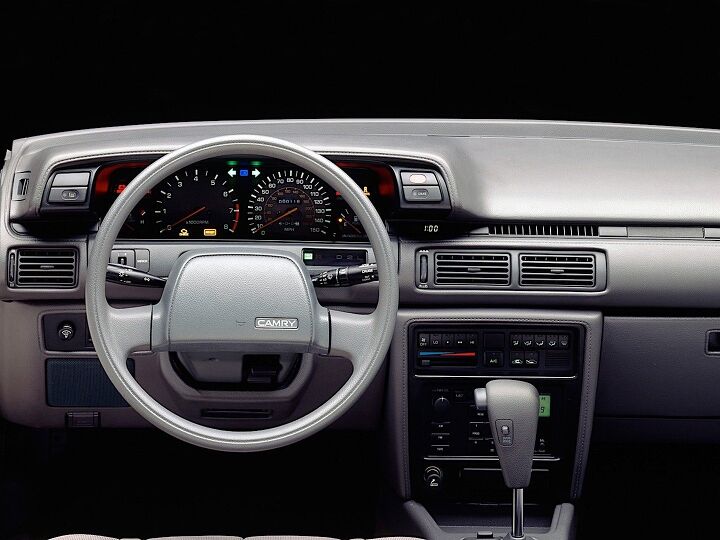
























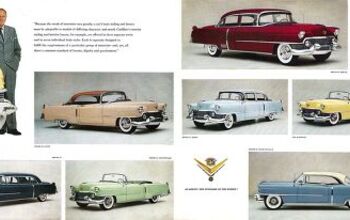
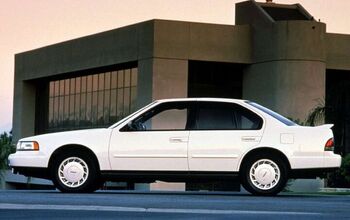
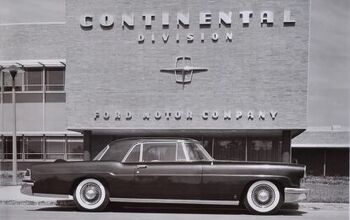
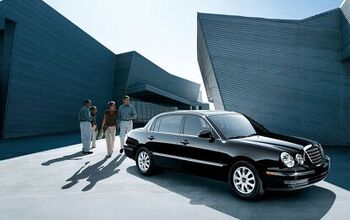
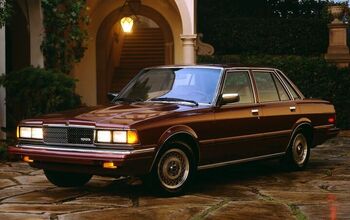










Comments
Join the conversation
I have your next Rare Ride. https://pittsburgh.craigslist.org/cto/d/murrysville-audi-v8/7416608905.html
I recently bought a 91 Camry DLX V6 with 76k original miles from a elderly neighbor for $1200. The car is like brand new. Not a rattle or noise anywhere. It's got plenty of power and is very comfortable. Just a great little car in my opinion. 20 mpg average after a couple months running the AC .